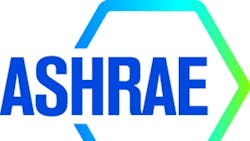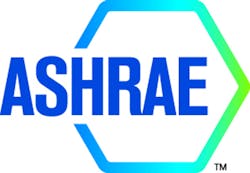Addenda to ASHRAE/IES Energy Standard 90.1 Open for Public Review
Fourteen proposed addenda to ANSI/ASHRAE/IES Standard 90.1-2013, Energy Standard for Buildings Except Low-Rise Residential Buildings, are open for public comment, including Addendum l, which adds multiple compliance options to ensure verification of delivered building-envelope performance.
Mathis added: “The addendum addresses several items of timely and critical importance to users. First, it seeks to clarify several inspection and performance-verification items that have long been requirements of the standard, with the goal of improving delivered performance and code compliance. Secondly, the proposed addendum includes new language addressing important building-envelope inspection and verification requirements, especially as they relate to controlling air leakage. The proposal provides for multiple compliance methods, including whole-building air-leakage testing and continuous air-barrier inspection and performance-verification procedures.”
Mathis noted the proposed changes likely would have an impact on construction first costs.
“Data provided to the committee showed that the savings of these various approaches to envelope-performance verification more than justify the potential increases in first cost,” Mathis said. “Additionally, the costs of the verification procedures will go down over time as builders become more familiar with envelope-performance testing, inspection, and other verification techniques and their construction practices improve due to the important feedback they will provide.”
Building-enclosure professionals are encouraged to carefully review the proposed changes and to offer comments, Mathis said.
Other addenda open for public review until Oct. 5 are:
- Addendum e, which relaxes the threshold for lighting-control alterations.
- Addendum f, which clarifies an exception to requirements for automatic daylight-responsive controls under skylights.
- Addendum j, which removes an exception to variable-air-volume- (VAV-) system ventilation optimization when energy-recovery ventilation is installed.
- Addendum k, which requires envelope assemblies to comply with Appendix A when complying with the Energy Cost Budget Method in Appendix G.
- Addendum m, which updates text on electric motors in Section 10.4.1 to provide information about the required efficiency of small electric motors shown in tables 10.8-4 and 10.8-5.
- Addendum n, which updates integrated-energy-efficiency-ratio (IEER) values for air-cooled variable-refrigerant-flow air conditioners and heat pumps above 65,000 Btuh. Depending on cooling capacity and product class, the new IEERs are between 15 and 20 percent better than the values they are replacing. The new IEERs will become effective on Jan. 1, 2017.
- Addendum o, which clarifies wording regarding duct-seal class.
- Addendum p, which updates Cooling Technology Institute Standard 201 in Table 6.8.1-7.
- Addendum q, which limits systems that can take advantage of the fan-power-pressure allowance for fully ducted return- and/or exhaust-air systems.
- Addendum r, which revises Section G3.1.1, Baseline HVAC System Type and Description, to confirm the hierarchy for selecting baseline HVAC systems, clarify what floors to count, and specify what building type to use when no one use is predominant.
- Addendum s, which adds an exception to 6.5.2.1 to address single-duct VAV reheat systems with direct digital control.
- Addendum u, which adds new requirements for transfer air in exhaust systems.
Open for public comment until Oct. 20 is Addendum bm, which makes requirements from the 2004 version of the standard the baseline for modeling when using Appendix G. Additionally, it allows Appendix G to be used as a compliance path.
For more information and to comment, visit www.ashrae.org/publicreviews.
About the Author
Scott Arnold
Executive Editor
Described by a colleague as "a cyborg ... requir(ing) virtually no sleep, no time off, and bland nourishment that can be consumed while at his desk" who was sent "back from the future not to terminate anyone, but with the prime directive 'to edit dry technical copy' in order to save the world at a later date," Scott Arnold joined the editorial staff of HPAC Engineering in 1999. Prior to that, he worked as an editor for daily newspapers and a specialty-publications company. He has a bachelor's degree in journalism from Kent State University.

